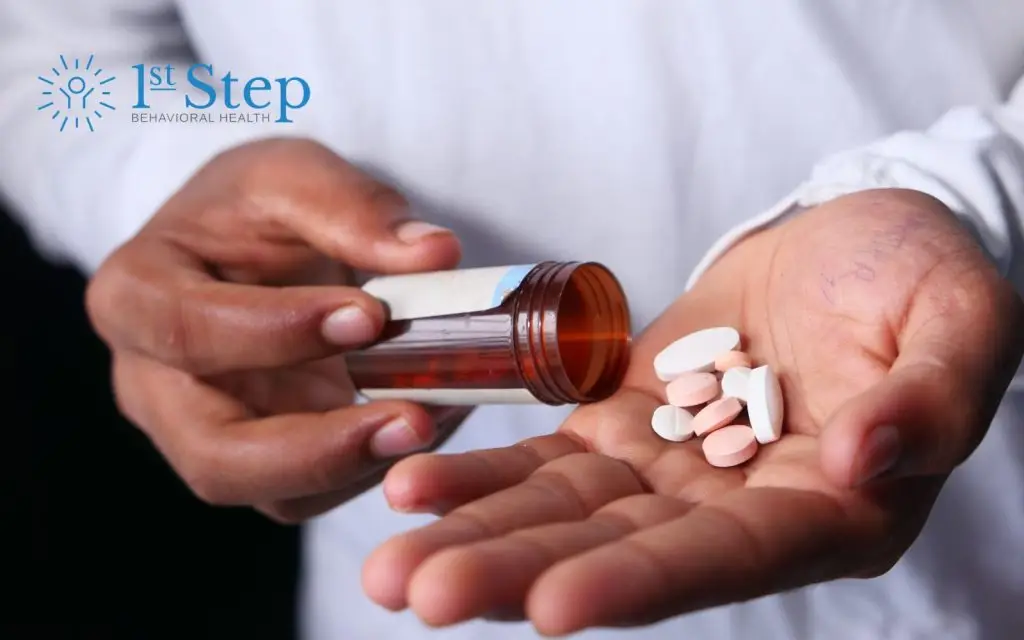When it comes to ADHD medications, two often compared stimulant medications are Dexedrine and Adderall. Both are classified as Schedule II drugs, meaning they are federally controlled substances with a high potential for substance abuse.
These prescription medications are central to modern ADHD treatment, yet they differ in composition, onset, duration, and side‑effect profiles. If you’ve been wondering what the difference is between Dexedrine and Adderall, here’s a clinical breakdown, supported by current data and expert guidance.
Active Ingredients and Pharmacology
Dexedrine (dextroamphetamine sulfate or dextroamphetamine saccharate) contains a single active amphetamine sulfate tablet ingredient—dextroamphetamine. That means Dexedrine only contains dextroamphetamine, making it a pure d‑amphetamine formulation.
Adderall, meanwhile, is a mixture of amphetamine salts, specifically four: dextroamphetamine sulfate, dextroamphetamine saccharate, amphetamine sulfate, and amphetamine aspartate monohydrate.
This composition difference means Dexedrine is considered more potent per milligram, acting primarily on the central nervous system (CNS). At the same time, Adderall also exerts effects on the peripheral nervous system via levoamphetamine.
Therapeutic Uses: ADHD and Narcolepsy
Both medications are FDA‑approved for attention-deficit hyperactivity disorder (ADHD) and narcolepsy. Dexedrine is approved for children aged 3 to 16 in immediate-release forms and for those 6 years and older in extended-release capsules/tablets.
Adderall IR (immediate release) is approved for children aged three and older; Adderall XR (extended release) is approved from age six upward; and Mydayis, another extended‑release formulation, is approved from age 13 up.
Both are used to treat ADHD symptoms like impulsive behavior, inattention, and hyperactivity, as well as for rapid symptom relief in narcolepsy.
Duration: Immediate vs Extended Release
Dexedrine is available in both immediate-release tablets (lasting approximately 4–6 hours) and extended-release capsules (lasting 8–10 hours). Adderall is available as IR tablets (every 4–6 hours) and XR capsules (lasting up to 12 hours). The newer Mydayis offers effects up to 16 hours.
Mechanism of Action and CNS Effects
Both medications are CNS stimulants: they increase levels of dopamine and norepinephrine by enhancing dopamine reuptake inhibition and triggering the release of neurotransmitters via actions on TAAR1 and VMAT2 receptors.
Because Dexedrine has only the more potent d‑amphetamine, it may produce faster onset and stronger effects than Adderall, but not necessarily better symptom control for every patient.
Efficacy: Which Treats ADHD Better?
Studies and clinician reports vary. Some evidence suggests Adderall may reduce ADHD symptoms slightly better in some instances, possibly because the mixed salts cover broader neurotransmitter profiles.
However, individual responses differ widely: some patients respond better to pure dextroamphetamine (Dexedrine), especially if they experience side effects from the levoamphetamine component in Adderall.
Ultimately, choosing between Dexedrine and Adderall usually comes down to symptom severity, tolerance, allergic reaction potential, and healthcare provider guidance.
Common and More Serious Side Effects
Both drugs share common side effects, often seen in stimulant use:
- Loss of appetite, weight loss, dry mouth, insomnia, nervousness, headache, increased blood pressure, and heart rate.
- Dopamine reuptake and peripheral effects may lead to hypertension, tachycardia, and other cardiovascular risks, including sudden death in rare cases if underlying heart disease exists.
- Motor tics, allergic reactions, and hair loss have been reported, though rare.
- Both are contraindicated with MAO inhibitors, which may cause a hypertensive crisis.
More serious risks include:
- Psychosis or mania, especially at high doses—patients taking 15–30 mg dextroamphetamine or doses equal to Adderall/Vyvanse had a 3.5 to 5.3× increased risk of developing psychosis vs non-users.
- Substance withdrawal, addiction, and dependence are real concerns: abrupt cessation after long-term use may lead to extreme fatigue, depression, and craving.
Dosing Considerations & Maximum Daily Dose
- Dexedrine: Doctors typically start at a low dose and increase it gradually. Immediate-release may be given 2–3 times daily; extended release once daily. The maximum daily dose varies with age and tolerance, typically under 40 mg/day, but is individualized.
- Adderall IR is taken 2–3 times a day, spaced approximately 4–6 hours apart; Adderall XR is taken once daily in the morning; Mydayis is taken once daily for more extended coverage. Maximum safe doses depend on the formulation—older guidelines suggest around 40 mg/day for adolescents, but this may differ per individual.
Always follow your healthcare provider’s instructions and the FDA’s labeling recommendations.
Peripheral Effects & Systemic Differences
Adderall’s levoamphetamine portion contributes to peripheral nervous system stimulation—more effects on cardiovascular and smooth muscle systems—whereas Dexedrine’s pure d‑amphetamine acts mainly through the central nervous system.
This difference accounts for Dexedrine’s faster, more substantial CNS impact and Adderall’s broader systemic effects, which some patients tolerate differently.
Abuse Potential, Legal Status & Medication Control
Both Dexedrine and Adderall are Schedule II controlled substances, tightly regulated due to the potential for substance abuse and addiction. They are prescription medications, and misuse—including crushing, snorting, or injecting tablets—carries serious legal and health risks.
Rates of misuse are particularly high among students and young adults, often leading to dangerous consequences such as overdose, psychosis, or addiction. In 2015, the misuse rate was nearly 20% among college students; prescriptions increased fivefold between 2004 and 2019.
Clinical Decision: Dexedrine vs Adderall
When comparing Dexedrine and Adderall, these factors are key:
- Active ingredient: Dexedrine is pure dextroamphetamine; Adderall is mixed amphetamine salts.
- Onset and potency: Dexedrine may act faster and stronger per mg.
- Duration options: Both offer immediate-release and extended-release forms, but Adderall XR lasts longer (up to 12 hours) and Mydayis longer still (up to 16 hours).
- Symptom targeting: Adderall’s mixed salts may work better for some ADHD symptoms; Dexedrine works better for others.
- Side‑effect profiles: Both carry risks of elevated blood pressure, dry mouth, insomnia, weight loss, impulse control issues, motor tics, and rare sudden death in predisposed individuals.
- Drug interactions: Both are contraindicated with MAOI inhibitors and require careful screening.
- Individual tolerance: Some people cannot tolerate levoamphetamine and do better on pure d‑amphetamine.
Managing ADHD: Beyond Medication
ADHD treatment typically combines CNS stimulants with behavioral strategies. Medication should be part of a broader program that may include psychological, educational, and social interventions.
Non-medical strategies—such as mindfulness, structured routines, cognitive behavioral therapy, and sleep hygiene—are valuable, especially in managing side effects like emotional detachment, irritability, or impulse control issues.
Summary
In summary, the benefits, uses, and differences between Dexedrine vs Adderall come down to purity vs mixture: Dexedrine is dextroamphetamine only; Adderall includes d- and l-amphetamine. Dexedrine can feel more potent, but not necessarily more effective overall.
On the other side, Adderall offers longer coverage options via XR and Mydayis. The drugs have similar side effects and serious risks, including increased blood pressure and psychosis. Both are Schedule II controlled substances requiring medical supervision.
Choosing the right option depends on symptom profile, side-effect tolerance, and close guidance from a healthcare provider.
Practical Advice
If you’re starting a new stimulant drug for ADHD treatment, here’s what to consider:
- Begin with a low dose, often in an immediate-release form, and then adjust based on the response and side effects.
- Monitor blood pressure and heart rate regularly.
- Be alert to signs of dry mouth, weight loss, changes in sleep patterns, mood swings, or new motor tics.
- Never mix with MAO inhibitors or other serotonergic drugs without medical clearance.
- Discuss any history of substance abuse, cardiovascular issues, or psychotic symptoms with your provider.
- Pair medication with non-pharmacological strategies for the best results.
Find Help for ADHD or Stimulant Abuse
Dexedrine and Adderall remain foundational prescription medications in the fight against attention deficit hyperactivity disorder (ADHD) and narcolepsy. Although they share many similarities—including central nervous system stimulant effects, dosing strategies, and potential serious side effects—the choice between the two often hinges on subtle pharmacological differences, patient response, and tolerance.
Dexedrine’s pure dextroamphetamine formulation tends to act more directly, while Adderall’s mixed amphetamine salts may offer a broader spectrum of action and more extended coverage. Ultimately, collaborating with a trusted healthcare provider is crucial for selecting the safest and most effective treatment, tailored to each individual’s symptom severity, medical history, and lifestyle.
If you or someone you love struggles with substance abuse or addiction, you are not alone. Find comprehensive treatment and recovery resources at First Step Behavioral Health. Learn about our programs or schedule an intake appointment by contacting our specialists today.
Frequently Asked Questions (FAQ)
1. Can lifestyle changes reduce the need for stimulant medications like Dexedrine or Adderall?
Yes. While medication is often the most effective intervention for moderate to severe ADHD, lifestyle changes—such as structured daily routines, regular exercise, proper sleep, mindfulness practices, and a nutrient-rich diet—can help reduce symptom intensity. These strategies are especially helpful in combination with behavioral therapy.
2. Are there non-stimulant alternatives to Dexedrine and Adderall?
Yes. Non-stimulant ADHD medications include atomoxetine (Strattera), guanfacine (Intuniv), and clonidine (Kapvay). These are typically prescribed when patients cannot tolerate stimulants, have a history of substance abuse, or require a lower abuse potential option. They may take longer to show benefits compared to stimulants.
3. Can stimulant medications affect emotional regulation?
Some people report feeling emotionally “flat” or detached while on stimulant medication. Others may notice increased irritability or mood swings as the drug wears off. Adjusting the dose, changing the release formulation, or adding behavioral therapy can help manage these effects.
4. How do Dexedrine and Adderall impact sleep patterns?
Both drugs can cause difficulty falling or staying asleep if taken too late in the day. Patients on extended-release forms often need to take them early in the morning to avoid insomnia. Maintaining good sleep hygiene and discussing dosing schedules with a healthcare provider can be beneficial.
Citations
- MedlinePlus. Dextroamphetamine information.
- Healthline. Dexedrine vs. Adderall: How Are They Different?
- Medical News Today. Dexedrine vs. Adderall: Similarities and Differences.
- Mayo Clinic. Dextroamphetamine (Oral Route). Available at: https://www.mayoclinic.org/drugs-supplements/dextroamphetamine-oral-route/description/drg-20071795.
Jump to a Section
Call (855) 425-4846
